
Blog
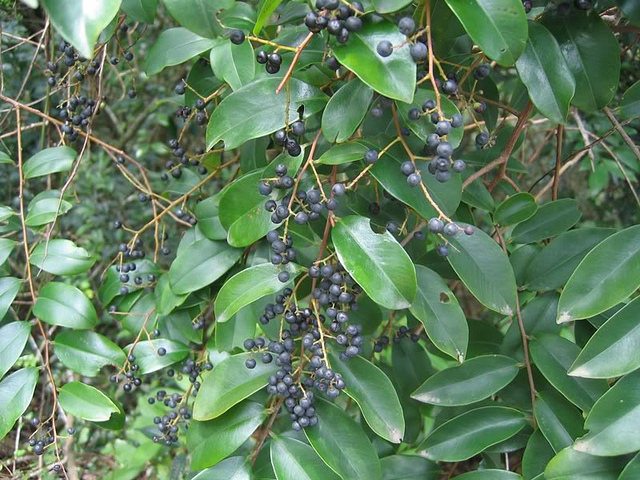
Vidang Embelia Ribes properties – Appetizer, Mild Laxative, Carminative, facilitates the expulsion of gas, Anthelmintic (tape-worms),Useful against skin diseases, bronchitis, urinary discharges, Dyspepsia, liver ailments, jaundice, hemicrania, worms in wounds etc.
Home Remedy : It is a common practice to put a few berries of the plant in the milk that is given to young children as it is believed to prevent flatulence. Sushruta describes the fruit as antihelmintic, alterative and tonic, and recommends their use along with liquorice root, for the purrpose of strengthening the body and preventing the effects of age.
We add 10- 12 seeds to water for excessive thirst in fever. The fruit paste is used as a mouth wash to combat cavities.
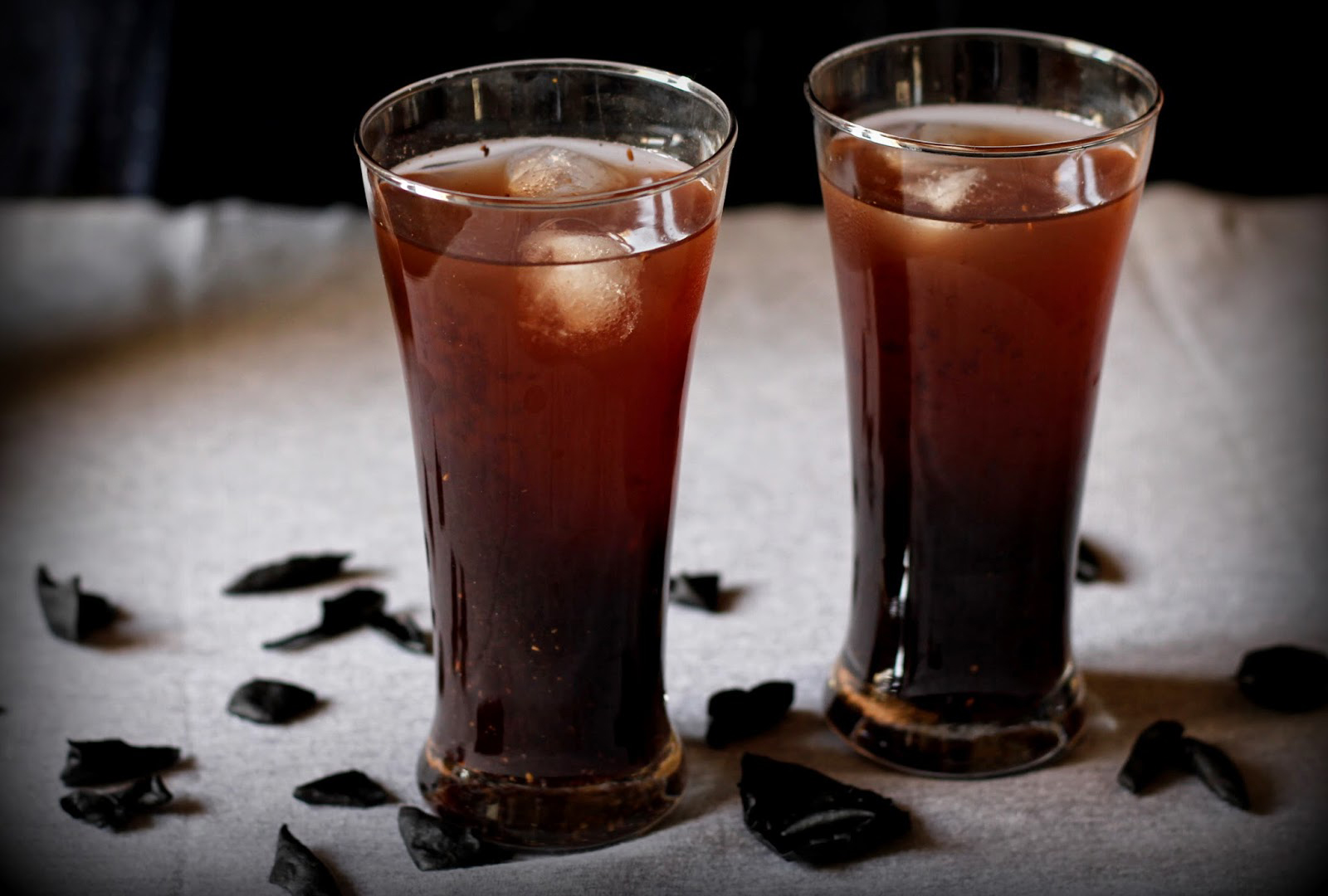
Cucumber – Cardamom seed recipes –
seeds cucu raisins, Grind 15 to 20 raisins, cucumber (2 tb spoon) and Cardamom (7-8) seeds together.
Drink : Soak above mixture in water for 4-5 hours in half glass of water . Grind and prepare Raisi – Cucum milk.
Stuffed Rotis: Stuff above grinded mixture in roti dough, and make stuffed Roties.
Rice: Cook rice, cool it and add above mixture to it to prepare sweet and cool rice.
Fruit Plate: Crush fresh figs, add above mixture to it and eat.
Gulkand: Add above mixture to fresh Rose Petals and grind them well to get Gul- Cucum Kand.
Ayurvedic Properties of above mixture: Mixture has cooling, diuretic and antipyretic properties.
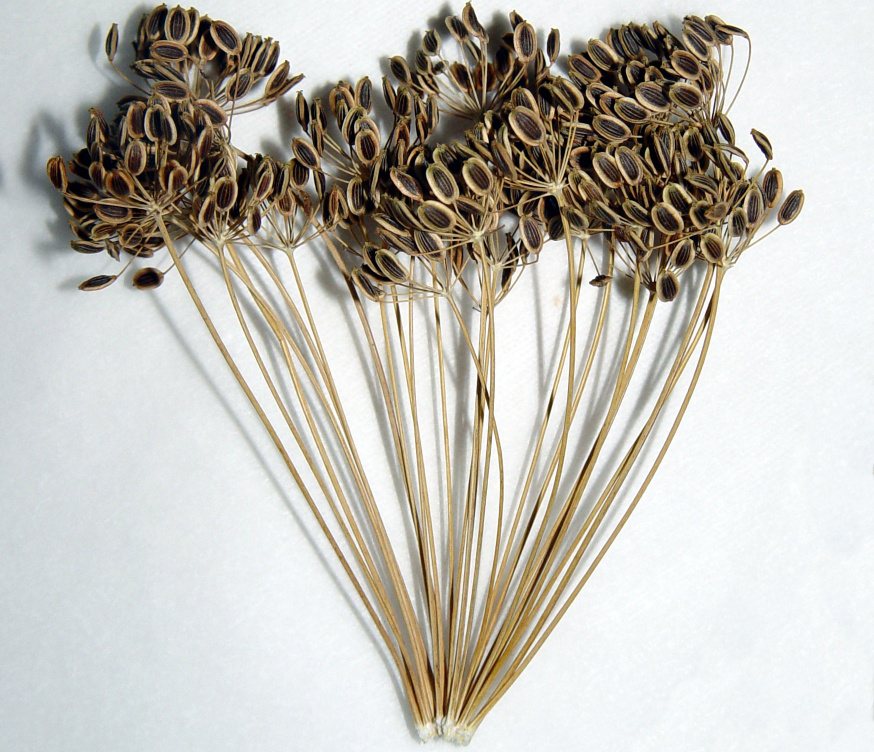
Dil is commonly known by its antispasmodic nature. We give Dil Water for colic in new born babies. Gripe water is a liquid given to infants with colic also contains dil seeds. I use essential oil of dil seeds for menopausal women while massaging, because it has anti-stress, antioxidant and memory enhancing activities. Herbal tea of dil leaves and seeds reduces the triacylglycerides and total cholesterol levels. So try to include Dil leaves/ Vegetable Shepu in your meals. Dill can be used as a regulatory agent of the menstrual cycle for women with irregular cycles. Flower, leaf and seed extracts of this herb has higher antioxidant activity. I suggest dil seed recipes to hypertensive and obese patient because it promotes the production of urine (diuretic). Essencial oil of dil has antibacterial property and can be used in skin ailments like acne.

Homemade Sunscreen Remedy :
Limonia acidissima (L).known as Kavath belonging to family Rutaceae. Traditionally, the constituents (in paste form) from the stem bark of Limonia acidissima is mixedwith water and applied mainly to the face. Regular application of this paste on the skin helps to keep skin cool, smooth, fair and well-textured complexion. It is also known to be protecting against skin cancer by blocking UV rays. In Myanmar, paste made from the pulp of L. acidissima bark, called as 'Thanaka', is used as a facial cosmetic to remove small spots and lesions on the skin. People from Myanmar grind the logs on a stone at home. Today, many commercial preparations of Thanaka are available as branded creams, pastes and powders that are being sold in Myanmar supermarkets and being exported.Some Thai spas have begun using the commercial preparations in their treatments.
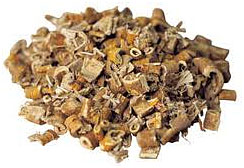
Prepare herbal water by soaking Glycyrrhizha glabra(Jeshthamadh) stems in boiled water. Add some honey to it and apply this mixer to damp and clean hair. Glycyrrhizha glabra(Jesjtamadh) has a cooling and moisturising action while Honey is a natural humectant, which means it attracts and locks moisture in.
Application: Massage approximately 1/2 cup of mixer into clean, damp hair, let sit for 20 minutes, and then rinse with warm water. You can also add 1 to 2 Tbsp of peanut oil for extreme sun-damaged hair which will help replenish the keratin protein bonds that the UV rays have attacked on and will also help in easier application. Treatment can be applied once/twice a month.
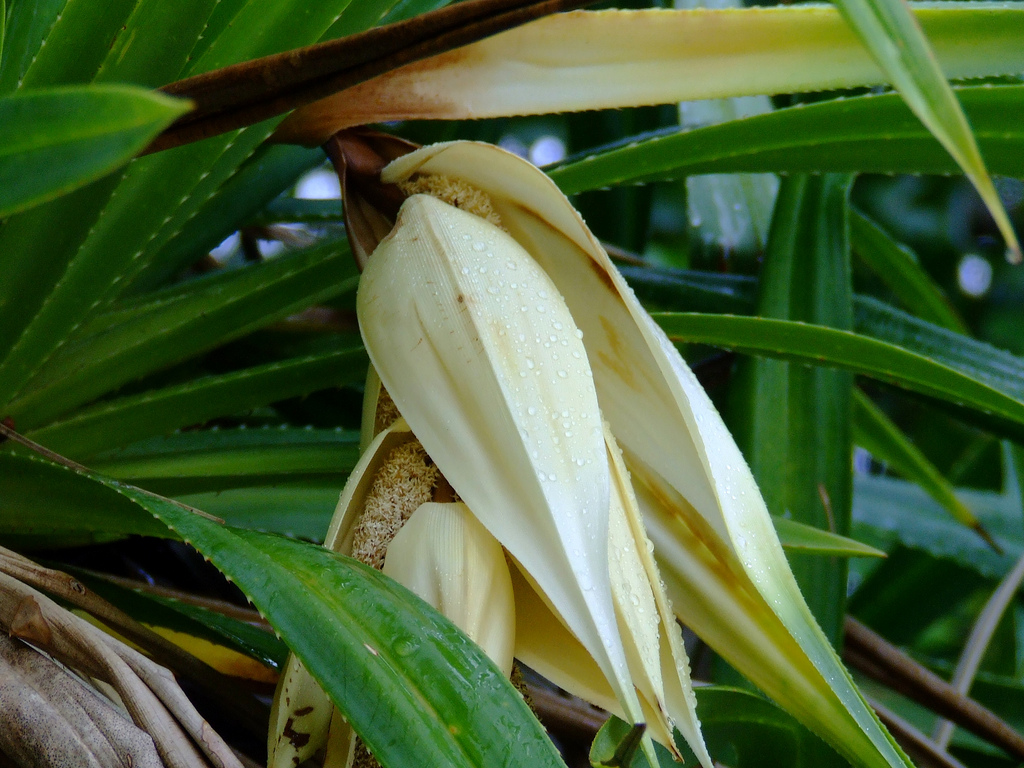
Kewra/Fragrant Screw Pine is a small branched tree or shrub with fragrant flowers, found wild in southern India, Burma and the Andamans. It bears in summer very fragrant flowers. Male flowers are used as perfume. An aromatic oil (kewra oil) and fragrant distillation (otto) called "kewra water or keorra-ka-arak". is extracted which is used as a food flowering in sweets, syrups and soft drinks.
Flowers have a sweet, perfumed odor that has a pleasant quality similar to rose flowers. The highly fragrant male flowers are widely used for decoration.
These are the common uses of flower, but I will now tell you the medicinal uses of kewra flower.
It has cardio-tonic, antioxidant, dysuric, and aphrodisiac properties. Fruit flour is highly nutritious.
Essential oil yielded by the highly scented flowers to be useful in headaches, earaches and as a liniment for rheumatic pains.
Kewra oil is extensively used as an antibacterial and an antiseptic. Since this oil has stimulant and antispasmodic properties, it is applied on the rheumatoid pains to get instant relief.
This oil has therapeutic uses too by which the mind and body functions can be stabilized.
I prepare oil with the help of Kewra flowers and other ayurvedic medicines for dandruff, alopecia areata (chaai), itching of the scalp, premature grey hair. It takes care of scalp to keep it healthy.

At high temperatures, hair tends to dehydrate. An increase in sweating makes the hair lose its oily coating that protects and makes the hair shine. Chlorine (a common ingredient of Municipality Water) is also a destructive agent that slows down hair growth and discolors the hair. Salt water tends to dry the hair out. Ultraviolet rays change the hair cuticles (the covering that protects the hair) and makes the hair's surface susceptible to damage. Split ends, dry, fragile, dull, frizzy hair and loss of volume are the most common signs of damage not only during the summer but in any season. All these are the effects of Global warming.
Remedy for Damaged Hair
Prepare oil from the flowers of Jati (Jasminum Officinale), Patla (Stereospermum Suaveolens) and Mucakunda (Pterospermum Acerifolium – Fragrant Nocturnal White Flowers). Daily use of this oil will protect scalp and hair from pollution, heat, ailments and stress too.
Jati flower is vaathar, shir, akshi, dant, mukh vednahar.and has healing property. Patla flower is cool, astringent and is useful in burning sensation. Mucakunda flower is pitthar, shirshulhar and stops bleeding.All these flowers help in maintaining the hygiene, texture, colour and the youthfulness of hair. The mentioned properties and actions of the Jati, Patla and Mucakunda flowers are taken from Ashtang sangrah, Kaidev Nighantu and Bhavprakash respectively.
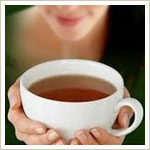
Parts Used in Tea: Dried or fresh Leaves
Adhatoda Vasica is called as Vasaka, Malabar nut tree. Its leaves are large and lance-shaped. Dried leaves are greenish-brown in colour and have a bitter taste.
The leaves contain several alkaloids like vasicinone, vasicinol, adhatodine, adhatonine, adhavasinone, anisotine and peganine, betaine, steroids, carbohydrate and alkanes . In which vasicine is an active ingradient for expelling sputum from the body.
Method:
Mix 1 tea spoon of Vasaka leaves' powder with 2 cups of water and then boil it till it is reduced to its half. Then strain the decoction and drink it when it is luke warm.
Health Benefits of Herbal tea of Vasaka –
It helps to reduce dry cough when consumed with ½ teaspoon of turmeric powder and ghee.Singers who are prone to cough can consume this decoction in any season. Decoction keeps the quality of voice intact and also cures hoarseness of voice, irritation in the throat and helps to loosen the phlegm deposits in the airway to finally expel it out.
In Ayurvedic medicine, malabar nut (Adhatoda vasica) has been used for a multitude of disorders including; bronchitis, leprosy, blood disorders, heart troubles, thirst, asthma, fever, vomiting, loss of memory, leucoderma, jaundice, tumors, mouth troubles, sore-eye, fever, and gonorrhea. Adhatoda vasica is useful in treating bronchitis, tuberculosis and other lung and bronchiole disorders.
A decoction of the leaves of Vasaka may be used to help with cough and other symptoms of colds. The soothing action helps irritation in the throat and the expectorant will help loosen phlegm deposits in the airway which makes adhatoda a good remedy for sore throat and for increased dyspnoea due to increased sputum volume and purulence.Vasa helps in curing bleeding piles, menorrhagia and epistaxis(nasal bleeding).It reduces cough with fever when consumed with honey and sugar.

Lemon grass (Cymbopogon citratus) is also known as gavati chaha (गवती चहा) in the Marathi language.
Lemon grass Curry
Ingredients:
Lemon Grass (grinded) – 3 leaves
Ginger – Grated 1 tea spoon
Fresh Coconut milk –4 cups
Cloves – 2
Dalchini – small 1 cm piece
Pepper – 4 grains
Grinded Souf – ½ tea spoon
Rice flour – ½ tea spoon
Method:
Heat and grind souf, pepper, clove, and dalchini. Then add them to coconut milk. Mix some rice flour with the same. Add ginger juice and grinded lemon grass to coconut milk and boil. Serve/consume it hot.
Lemon Grass Stormy Salad
Ingredients:
Grated Carrot – ½ katori
Grated Beet – 1 table spoon
Grated Cabbage – ½ katori
Lemon juice – ½ tea spoon
Ginger juice- ½ tea spoon
Grinded leaves of Lemon grass– 3
Mint leaves – 10-12
Powder of 3-4 peppers
Sesame and Jeera seeds – 1 tea spoon
Salts
Method:
Mix carrot, cabbage, mint, lemon grass leaves and beet in one bowl. Add salts, pepper powder, ginger and lemon juice to it as per your requirement. Sprinkle roasted Sesame and Jeera seeds over it.

Uses of food items containing Lemon Grass:
Viruses and bacteria grow actively and affect our body in rainy season.
We get fever, diarrhea, cough, cold, arthritis etc in rainy season.
In monsoon barometric pressure changes, as well as humidity and temperature. Change in weather pattern, affects the pressure in the brain, or the way the brain blocks pain and joint starts paining.
In monsoon, this Curry and Stormy Salad will help you to reduce cough, cold and joint pains.

Is a Hangover troubling you?
Symptoms :
Fatigue, Thirst, Headaches and muscle aches, Nausea, vomiting or stomach pain, Poor or decreased sleep, Increased sensitivity to light and sound, Dizziness or a sense of the room spinning, Rapid heartbeat, Red, bloodshot eyes, Shakiness, Decreased ability to concentrate, Mood disturbances, such as depression, anxiety and irritability are few symptoms of a hangover.

Dates/Pomegranate/Tamarind
Kharjuradi manth (If any of above symptoms occur then the following remedy should be consumed.)
Ingredients:
Fresh fruit pulps of Falsa, Grapes, Dates, Pomegranate, Amala and Tamarind.
Water.
Cardamom powder , Sugar.
Method:
Blend 100 grams of mixed fresh fruit pulps of Date, Pomegranate, Grapes, Aamla, Tamarind, Falsa and 100 ml water in the mixer. Add a little tamarind in the fresh fruit mixer. If you add a large amount of tamarind, it will give a sour taste to the Manth, which is not recommended. Amala is generally available in winters and grapes are available only in the summers. So, in these seasons, instead of fresh fruits you can add dried amala or dried grapes to the fruit pulp mix. But before adding them, you must soak them for 3-4 hours in water to make them soft. This will help them to blend easily with other ingredients in the mix. Add sugar and cardamom powder according to your taste and drink it sip by sip. The Manth should be not very liquid or very solid.
Use :
It is a very good remedy for hangover symptoms like thirst, nausea, vomiting, stomach pain, head ache, shakiness, poor sleep, increased sensitivity to sound and light.

Botanical name of Winter Melon or White gourd is Benincasa hispida. It is also called as Petha in Hindi, Kohala in Marathi and Kushmand in Sanskrit.
Old winter melon (Fully ripe), is cool, aphrodisiac and alkaline in nature, is easy to digest and improves acidity.
Used in excessive tiredness, weight loss and thirst. It improves intelligence, strength, immunity, body mass.
Useful in bleeding disorder such as menorrhagia, bleeding per rectum, nasal bleeding etc.
It helps to pass urine easily, in dysuria. Useful in urinary calculi. Helps to break into pieces and to increase the bulk of urine and faeces.
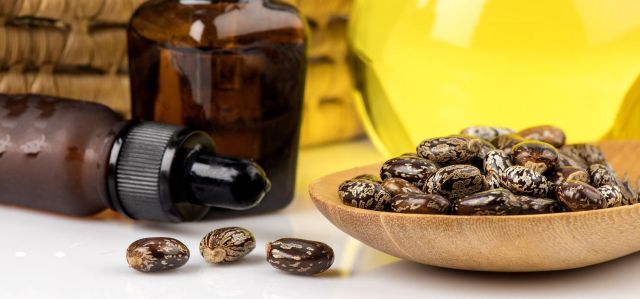
The Castor Oil Plant / Erand Plant / Ricinus communis is a native plant of India. Castor seed is the source of castor oil, which has a number of uses. Castor oil is used as laxative but is poisonous in large dose.
Dry leaves of castor plant has antioxidant activity. By applying it on skin, it allow collagen production to continue. It also slows down the appearance of fine lines and wrinkles. It lightens the age spot's appearance in some patients and thus improves the skin appearance. It also helps to reduce the acne.
The whole leaves are liver protective and used in jaundice. The plant also shows anti fertility activity due to its estrogen-like activities exhibited by the extract. It is also used as antimicrobial agent in particular infections.
Leaves are used in the form of a poultice or fomentation on sores, boils and swellings. We sometimes advise decoction of castor plant parts in allergies, leucocytosis and eosinophilia.
In Ayurprevencia Cinic, Aundh, Pune, we apply leaves coated with oil and warmed, over the abdomen to give relief in flatulence in adults as well as children. Leaves are considered lactogogue and are applied as poultice over the breasts. Application of crushed leaves give relief in guineaworm.
It reduces pain as it has an analgesic/ pain relieving property. We add it in massage oils or in steaming cooker for the patients having Body ache.
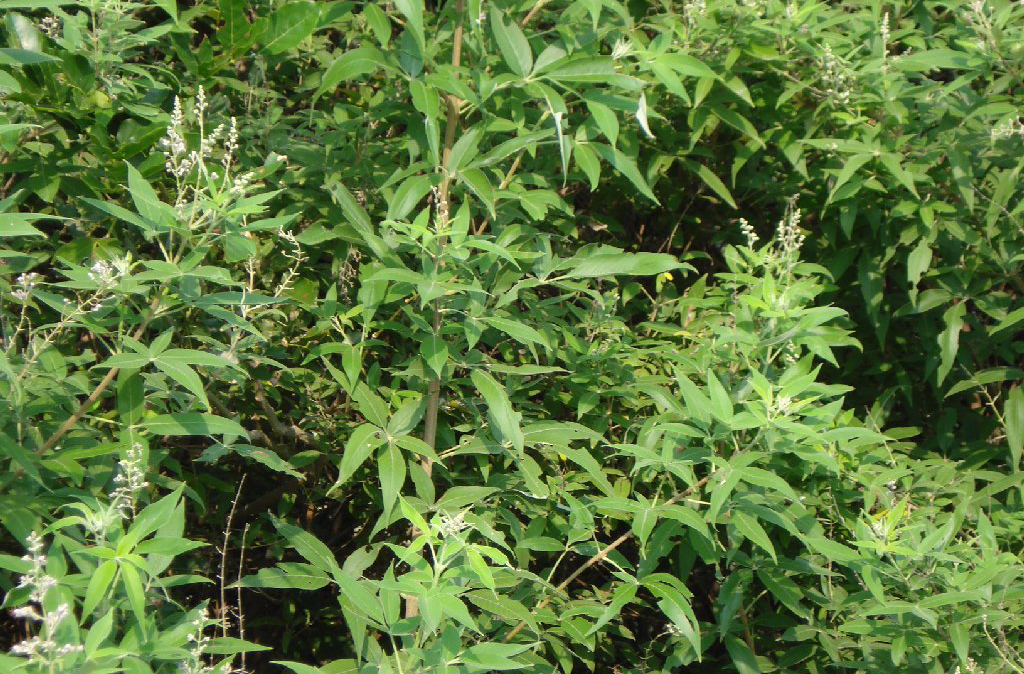
Nirgundi – Vitex negundo
The plant is traditionally reported for its use for the treatment of cough, asthma, fever, eye disease, inflammation, intestinal worms, skin diseases, nervous disorders, leprosy and rheumatism.
Its leaves and seeds are widely used externally for rheumatism and inflammations of joints. They have significant analgesic activity and antiarthritic activity. You can prepare decoction of fresh leaves and dip painful joints in it for reducing pain and oedema.Herbal shoes are prepared from nirgundi wood are reported to be effective in the treatment of rheumatism.
It shows Krumighna property. Used largely in hair loss, specially due to dandruff and other infections. Leaf essential oil has antifungal and antibacterial activity.Leaves are burnt in a fire during the rainy season to keep mosquitoes away from animals and human beings; the smoke repels mosquitoes and insects.
Nirgundi is traditionally used in Epilepsy and Memory loss.
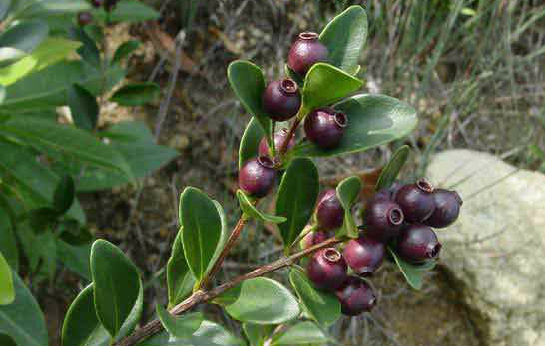
Embelia fruits are acrid, astringent, ascaricidal, anthelmintic, anti-inflammatory, antibacterial, bitter, brain tonic, carminative, contraceptive, diuretic, febrifuge, laxative, stimulant, and thermogenic in nature. The seeds are spermicidal, oxytoxic and diuretic. The plant is also useful and known for its blood purifying properties.Aqueous extract of the fruit shows anthelmintic against tapeworms. Active principles are found to be estrogenic and weakly progestogenic so useful in perimenopausal and postmenopausal symptoms like indigestion, bloating, weight gain and urinary symptoms. The seeds are spermicidal, oxytoxic and diuretic. It shows anti-inflammatory, hypotensive and anti-pyretic effects. So it is included in antihypertensive remedy.
They are useful in leprosy, nervous debility, dyspepsia, flatulence, colic, tumors, asthma, fever, ascaris infestation, general debility and skin diseases. The fruit paste is used as a mouth wash to combat cavities, to relieve dental caries and bad breath. Effective in mouth ulcers, toothache and sore throat. It is applied externally for skin related problems. It improves complexion too. The fruit pulp is used as a purgative, used in weight loss treatment. The dried berries are useful in treating intestinal worms, and piles. Used as nasal drops for head ache, cough, cold, lung diseases, pneumonia.
A 65-year-old female came to my clinic with severe pain in her right great toe and knee. The affected joints were swollen, reddened and were excruciatingly painful for three months. She denied of any injury to these areas before. She suffered from acidity sometimes and was febrile too. Joint pains started in the evening and were the worst when accompanied by acidity or fever. All the vital signs were within normal limits. She lost her weight by 5-6 kilograms in those 3-4 months and was depressed due to loneliness.
I diagnosed these symptoms to be of disease "Vat-rakt". Symptoms of Vat-rakt have similarity with Gout in the Modern Science which is characterized by abnormal metabolism of uric acid resulting in excess uric acid in blood and tissues. This is caused either by excess uric acid production or by problems with uric acid excretion and can lead to gout and kidney stones. If untreated, recurrent acute gout can lead to joint destruction and renal damage too.
Her Lab values show a WBC of 5,400 (Normal 4,300-10,800) and a Uric Acid level of 9.7 (Normal >7.0).
Before she started my treatment, she had to take anti-inflammatory and pain-killer drugs many times to get relieved from all that pain. I discussed with her the restricted regimen which had been told by her physician in order to avoid further episodes of gout and I advised her some herbal liquid and tablets to consume for a month. I prescribed her herbal tea for a longer duration as a preventive measure, and a list of food items to avoid so as to check the prognosis of the disease. I asked her to do a few Yogasanas and a half an hour morning walk daily. I continued the same treatment with minute changes for at least 7-8 months and now she is relieved from Vat-rakt (GOUT) and is very happy.
Vat-rakt is a painful disease and can significantly affect a patient's life quality. Treatment of Vat-rakt at an acute stage must be initiated promptly.
In winter, we lose plenty of moisture from our skin, and this is one such condition, which is really impossible to avoid. The dry and cold conditions strip us off the natural moisture content, which makes it essential for us to replenish the lost moisture externally. And lip care is just as essential as our body care!
Why is lip care essential?
Our facial skin is thinner than rest of the body skin and thus it contains oil glands for its protection. But the skin on our lips does not contain any oil glands. This is why during winters, when the moisture is taken away, they become dry and cracked with a normal tendency to bleed too.
Hence it becomes very important for us to take proper care of it.
Which habits lead to chapped lips?
Biting and licking lips Constantly touching your lips with your hands (bacteria from your hands are left behind) The older you get, the higher the chances are for your lips to dry.
How will you protect your lips?
Follow the steps below to understand as to how you can take proper care of your lips.
1. Hydrate, soothe and nourish them well, by applying whatever is available from the list below (you will get the best results if you apply them warm):
aloe vera juice, milk, cucumber juice, kokum butter, medicated oil, ghee, castor oil, olive oil
2. Keep the dryness at bay by consuming one tea spoon of ghee / medicated ghee in winter and by drinking plenty of water, juices, soups daily. This is the best way to keep your lips hydrated from the inside out.
3. People tend to lick their lips when they are dry. Don't do that. It will damage them more.
4. Have balanced food daily.
5. Use lip balms. We prepare a variety of lip balms with moisturizing agents, which affords more nourishment and have long lasting power. Serene lip balm has a cooling, pain relieving, soothing effect and it keeps your lips smooth and moist and crack free for a long period. Mrudul Oshtha Lepa is a nourishing, healing, pain relieving, hydrating lip balm. Carry it with you 24×7 and apply when your lips feel dry.
6. Quit smoking, because it develops cracked and dry lips.
7. Exfoliate your lips with a good scrub or a small brush to remove the dead cells from time to time. After scrubbing, simply apply a good lip balm for best results. This will definitely make them extra soft and shinier.
8. Use lipsticks which have moisturizing ingredients.
9. Avoid using balms containing glycerin, petrochemical products, alcohol, menthol and retinol in winters. These are good only for the summers.
Chapped lips can be a miserable thing in winter. Your lips are in pain, the skin peels off constantly, and it's hard to get lipstick to go on evenly or stay on. What can you do to avoid chapped lips in winter?
Home Remedies for cracked or chapped lips:
1. If your lips tend to become extremely dry, apply ghee/sesame oil/olive oil/castor oil frequently and if possible before going to bed. It is the best way to smoothen, clean and moisturize our lips.
2. Apply a paste of Jasmine leaves with ghee for the wounds or apply Jatyadi Oil on cracked lips.
3. Paste of Baberis aristata (Daruharidra) is useful for itching lips and on scars
4. Glycyrrhiza glabra (Jeshthamadh) is a natural lip conditioner. Apply its paste on your lips for 3 to 4 minutes daily for natural moisturization.
5. Apply homemade butter mixed with Asparagus racemosus(Shatavari) powder on burning lips.
6. Prepare a paste of Almond, mix it with Kokum butter and apply it on lips for pain frequently.
7. Paste of rose petals is a natural lip conditioner. In winter add some ghee or milk to this paste and apply on cracked lips.

Wild Cherry, Sweet cherry: cherry-juice-2-1024
Sweet Cherry/Prunus avium is a deciduous Tree growing.It is in flower from Apr to May, and the seeds ripen from Jul to August.The hard, reddish-brown wood (cherry wood) is valued as a hardwood for woodturning, and making cabinets and musical instruments.The gum from bark wounds is aromatic and can be chewed as a substitute for chewing gum.A green dye can also be prepared from the plant.
Cherries contain numerous vitamins such as Vitamin C and Vitamin A, and are high in nutrients like beta-carotene, perillyl, ellagic acid, bioflavonoids and potassium. This delightful fruit also produces melatonin. Melatonin, in addition to helping slow the aging process, also helps control healthy sleep patterns. A diet that includes cherries can help decrease body fat, cholesterol and arthritic inflammation.
Cherries are known to relieve headache, gout and associated symptoms of Fibromyalgia Syndrome.Cherries contain anthocyanins which is the red pigment in many fruits. The anthocyanins in cherries have proven to reduce inflammation and pain.The anthocyanins are potent antioxidants that they may be beneficial in the fight against diabetes and heart disease. The anthocyanins in cherrie helps to lower the levels of triglycerides and cholesterol.
Sweet cherry contains vitamin C and other chemicals that might act as antioxidants.Sweet cherry is used to prevent cancer and diseases of the heart and blood vessels (cardiovascular disease). It is also used to treat osteoarthritis and gout. The fruit stalks are astringent, diuretic and tonic. A decoction is used in the treatment of cystitis, oedema, bronchial complaints, looseness of the bowels and anaemia. An aromatic resin can be obtained by making small incisions in the trunk. This has been used as an inhalant in the treatment of persistent coughs. Although no specific mention has been seen for this species, all members of the genus contain amygdalin and prunasin, substances which break down in water to form hydrocyanic acid (cyanide or prussic acid). In small amounts this exceedingly poisonous compound stimulates respiration, improves digestion and gives a sense of well-being.
Hydrogen cyanide, a poison that gives almonds their characteristic flavour, is found mainly in the leaves and seed and is readily detected by its bitter taste. It is usually present in a too small quantity to do any harm but any very bitter seed or fruit should not be eaten.
Research also revealed that the health benefits of drinking one full glass of cherry juice daily equals the benefits of consuming 23 portions of vegetables and fruit. Further, it was determined that drinking 250ml of cherry juice provides more antioxidants than five portions of tomatoes, carrots, peas, watermelon and bananas. Antioxidants attack free radical molecules in the body and can also help prevent heart disease, aging, cancer and stroke.
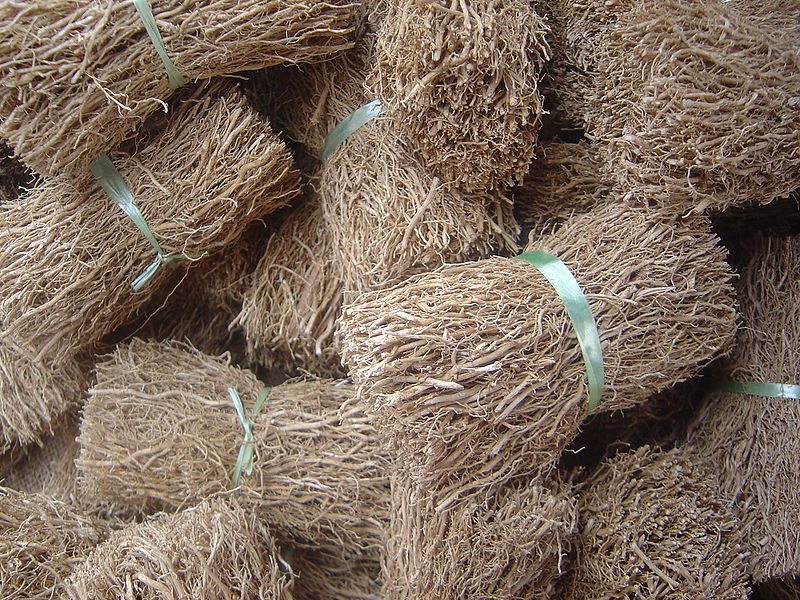
Properties :
Tonic to heart and brain, Blood purifier, Cooling agent, helps to retain complexion, galactogogue, anti haemorrhegic, antiemetic, antiperspiratory, deodourant and antipyretic.
Uses:
It is used in burning micturation. Khus (vetiveria zizanioides) and coriander seeds' water is given to cure vomitting.
It is also useful as a blood purifier in many skin dseases. Mixture of khus (vetiveria zizanioides) and other herbs like shatavari and trunpanchmul is useful during scanty milk flow in lactating mothers.
In summers, aromatic baths are prepared by mixing its decoction in water. Cleaned roots are simply kept in the drinking water to get cooler water.
Khus (vetiveria zizanioides) paste can be applied to any part of the body, to give a cooling effect and to reduce excess perspiration in summers.
Khus (vetiveria zizanioides) Paste is also applied to reduce tanning of the skin, which ultimatly leads to the retention of complexion.
For headaches, Herbal Cigarettes are prepared with the help of these grass roots.
Khus (vetiveria zizanioides) and Sandalwood powder is consumed freqently in menorrhegia.
Ushirasav:
Asavas are liquid preparations containing self generated alcohol.
Ushirasav contains the following herbs:
Khus (vetiveria zizanioides), Lotus, Lodhra, Gambhari, Dhmasa, Padmakashtha, patha etc.
Ushirasav is very cool and is astringent and anti haemorrhagic in nature. It balances pitta dosha and is useful in Burning sensation, Body odour, Burning micturaion, Discolouration, scanty lactation, Menorrhegia, Anaemia, Skin diseases, Diabetis, Piles, Worms and oedeama.

Flowers are the most attractive parts of the plant which enchant with their beauty and fragrance.
In Ayurved, flowers have an entirely different space and significance. They are used to maintain health, treat diseases and enhance beauty from the time immemorial. For hair and skin care, different formulations of flowers are used. Juice, Powder, Hima (cold infusion), Fanta (hot infusion), Kalka (paste), Avaleha (linctus), Asava, Oil, Inhaling preparations, Arka, Ganghsattva (scents), Pushpakhanda, Yusa (soups), Saka (vegetables), Panaka (Syrups) etc. are the different formulations of flowers.
Flowers alone can be used to manufacture a wide range of cosmetic products which are considered indispensable in day to day life. More over these products have zero side effects, if and only if used as per physician's advice, in proper proportion or quantity and in accordance to the requirement of the person in question. These products are in the purest form and cost less as compared to the sky soaring prices of the products available in markets today. And off course they are result oriented too.
Some of the simple Preparations/Kalpas have been mustered from various Samhitas and are pinned below. These kalpas should be applied, according to the needs of the healthy or diseased person; with that sometimes patient may need oral medication too.
Hair care includes cleanliness of hair and maintenance of its healthy appearance. Hair colour and its texture show whether they are healthy and youthful or not. Different herbs help in hair care in different ways.
Following Kalp (Pharmaceutical preparation) is taken from Bruhat Samhita.
Aromatic dry herbal shampoo –
It contains –
Tvak (Cinnamomum Zeylanicum)
Kushta (Saussurea Lappa)
Ushir (Vetiveria Zizanioides)
Kamal(Nelumbo Nucifera)
Sprukka (Polygonum Alanum)
Tagar (Valeriana Wallichi)
Nagkesar and
Tamalpatra (Cinnamomum Tamala).
These ingredients can be used singly or in a mixture form. Considering patient's complaints one can make combinations of this dry shampoo. Generally, for head bath, Decoction of these fresh herbs is prepared, to rinse the hair strands, which helps in promoting healthy hair growth. It has pleasant fragrance with a relaxing effect; checks skin infections along with dandruff, and also promotes sound sleep.

Ingredients
Bhringraj/Maka (Eclipta alba leaves – ¼ cup
Coriander leaves – ¼ cup
Freshly grated Coconut –1 cup
Aamla Juice – 1 table spoon
Grated Beet – ¼ cup
Pepper and Jeera powder – 1/4 teaspoon
Fresh Chillies -2
Salts
Method:
Mix all the ingredients and grind them well.
Add tadka of curry leaves to chutney.
Important Note: Bhringraj/Maka (Eclipta alba) leaves are bitter in taste and give black colour to the chutney. You can add sugar to the chutney to dilute its bitter taste. Eclipta alba is an annual herb, grows in moist, waste places, and on road sides all throughout India.
Uses: Bhringraj/Maka (Eclipta alba)is a well known and effective hair loss remedy. It is used for the treatment of hepatitis, cirrhosis, eczema and has an antibacterial, anti-hemorrhagic activity. It is used for dyeing hair and tattooing too.
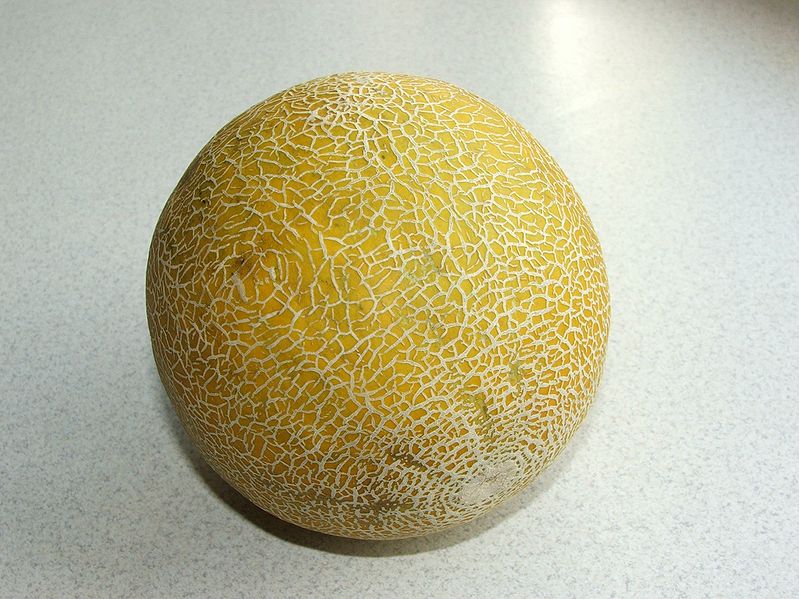
Musk melon (Cucumis melo) Shikran –
Ingredients : Musk melon, Sugar, Cardamom (veldoda), Gulkand
(It's a summer recipe. Gulkand and cardamom cools your body and mind.
De-seed the musk melon.
Scoop off the fleshy part of the melon with the help of a spoon.
Mash the flesh of the melon and create a pulp. (Do not grind it in a mixer.)
Add a table spoon of Gulkand to one bowl of mashed melon.
Add some cardamom powder and sugar to it.
Keep it in a refrigerator for some time and then eat it.
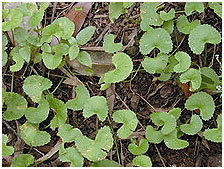
Qualities of Centella asiatica (Mandukparni):-
Mandukparni is described in Bhavprakash(6/280) as Hima, Sara, Tikta, Laghu, Medhya, Swarya, Smrutiprada, Swarya, Aayushya, Kushtha, Meha, Pandu, Kasjit, Kas, Vishhar, Shophhar, Jvarahar. According to Bhavprakash Mandukparni is useful in pitta prakruti persons, singers and in persons suffering from memory loss, food poisoning, anaemia, high fever, oedema and diabetes.
According to modern science, Centella is a
Mild adaptogen
Mild antibacterial
Antiviral
Anti-inflammatory
Anti ulcerogenic
Anxiolytic
Nervine
Vulnerary
And can act as a:
Cerebral tonic
Circulatory stimulant
Diuretic
Centella asiatica might prove to be useful in the treatment of anxiety too.
In Thailand, tisanes of the leaves are used as an afternoon stimulant. A decoction of juice from the leaves is thought to relieve hypertension. A poultice of the leaves is also used to treat open sores.
(*Please consult Ayurvedic Doctor before consuming any recipe of Centella. Please do not consume any recipe of centella in cold, cough and diarrhoea.)
Ingredients:
Grated Coconut -3/4 cup
Centella leaves -1/2 cup
Pomegranate Juice – 2 table spoons
Green chillies -2
Gingerjuice -1/4 th teaspoon
Sugar and Salt
Method:
Grind all the ingredients in Mixer and add tadka of curry leaves, Jira and asafoetida Hing and Musturd seeds in ghee to chutney. Use this chutaney in sandwiches, garnish on salads, serve with chapati and add it to rice and eat.
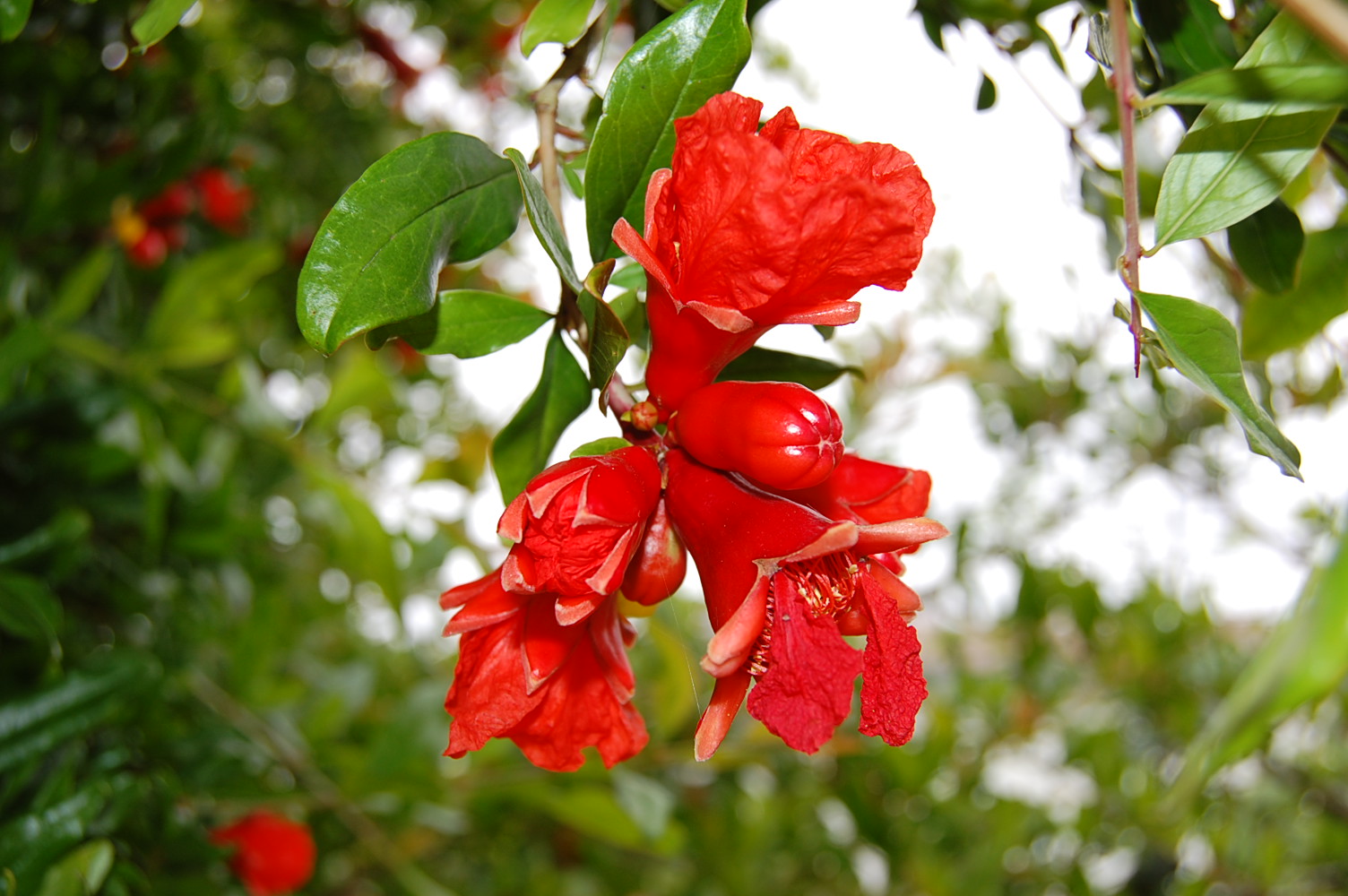
Nose bleeds due to heat in October and in winter at some places due to indoor heat and dry weather.
One can get following remedies in garden or in backyard.
Juice of Pomegranate flower and Durva – Cynodon dactylon should be drunk or put in nostrils twice a day.
Juice of Adulsa (Adhatoda vasaka)Leaves should be drunk or put in nostrils in the same way.